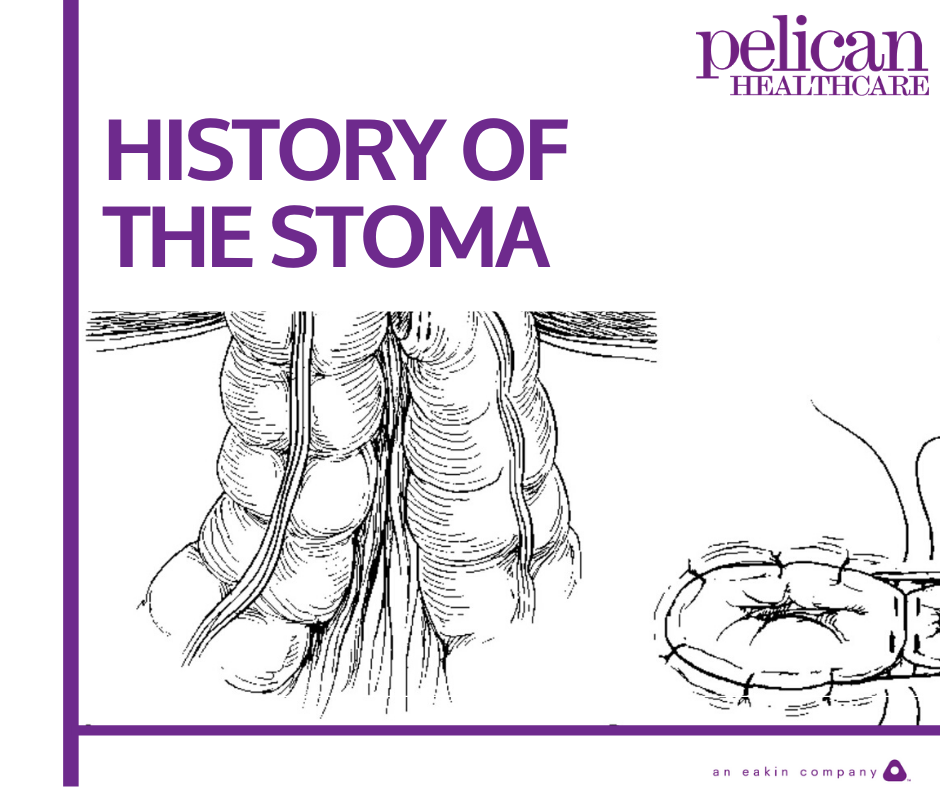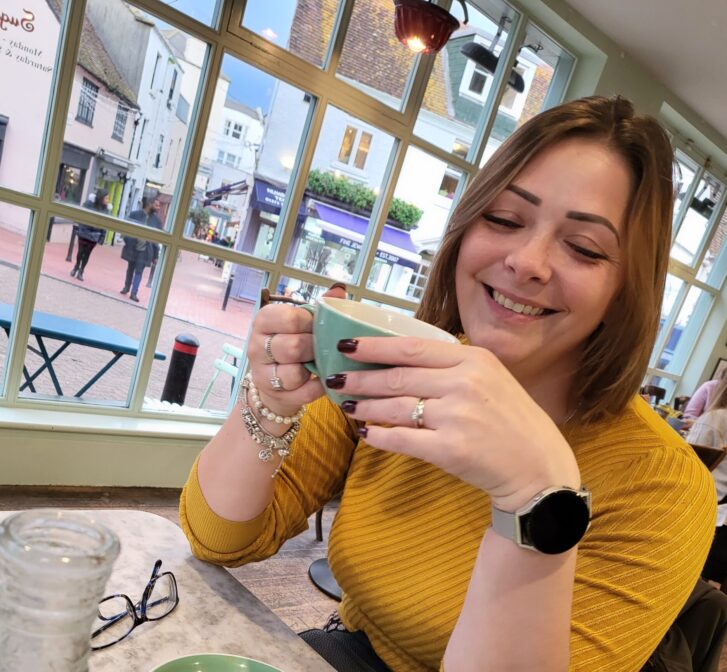History Behind the Stoma
Sat down as I do and having the thought, Is there a history behind the stoma? Which person sat down one evening and thought, I know, what if I pull your insides to the outside, this could potentially save a life or improve the quality of life. How did the stoma come to be?
The history of the stoma
The first-ever recorded surgery in early surgical books was reported to have been a colostomy back in 1750. At the time there was no differentiation as to if it was a colostomy or an ileostomy. The lady was named Margaret White and she was 73 years of age.
It states that the indication for the surgery was a tightened naval break and that 55 cms of her intestine was dead. Her gut was torn and she was sick a lot. Chelseden removed the dead intestine and left a small piece of the intestine sitting outside the abdominal wall. Despite the poor hygiene and conditions that the hospitals were in then she survived the procedure and walked about for many years presumably managing the output with rags and towels as at this time there was no stoma care or wound management.
Surgeons from that time hesitated to perform operations around the abdominal area for fear of scandal and perontinitus, due to death typically being the end result.
Jean Amussat a surgeon (1796-1856) compiled a list and published all previously completed stoma operations from 1716 – 1839, in total 27 operations were carried out but only 6 of those survived.
The creation of the stoma was not favoured by surgeons at all and didn’t garner any traction until the First World War; this operation was not only harmful to a surgeons career but due to their reluctance to carry this out, bizarre experiments were formed.
These bizarre experiments were as follows:
- Excessive use of laxatives
- Manual removal of stools via the anus by hand
- Placing a kitten on the tummy to have the heat warm up the abdomen and help pass the stools
- Treatment of a kilo of mercury to help pass a blockage
For many these treatments were not successful and more so because most of them died from mercury poisoning.
The history of the Colostomy
It is thought that the first deliberate surgical colostomy are dated from 1710 when a doctor of medicine and anatomics Mr A.de Littre named the stoma as a treatment for anustresia ( a congenital abnormality in which the anus was not adequately developed).
His method at the time was to place this artificial output on the left hand side close to the groin.
The historical reports state and show that only a few surgeons were brave enough to even attempt to create an artificial anus when other treatments failed.
A surgeon named M Pillore built what was classed as the first successful colostomy in 1776, a patient named Mrs M Morel, who at the time had a malignant tumor in the rectum and as an end result had a total gut closure. The opening of the stoma back then was made in the appendix. A sponge which was held in place with an elastic band caught the faeces which came out of the stoma with the regular use of clysters ( enema). These sometimes contained mercury along with some other bizarre ingredients.
Sadly this lady died 18 days post op due to perontinus. The autopsy revealed that the cause of death wasn’t due to the operation but down to a bowel narrowing and 1 kg of recovered mercury that was originally administered preoperatively.
Littre’s method was applied by a surgeon named Dubois in 1783 on a new born baby but sadly the baby passed away a week later.
The French surgeon Duret had a successful outcome in 1793 on a baby who was a few days old and born without an anus. He recovered extremely well and lived for 43 years with that stoma.
A Danish surgeon named Hendrick Callisen ( 1740-1824). He wrote a surgical handbook in 1798 and described the surgical approach for the construction of a colostomy.
His work was then continued by Amussat, his method was incredibly difficult and had many disadvantages for the patient due to its high placement.
The first British surgeon named George Freer in 1815 didn’t have much success either. Both his patients died within a few weeks of the surgery.
The reason being for this was the overzealous use of laxatives and enemas through the stoma. This resulted in a damaged appendix and death in both patients.
The first successful surgery was carried out by Daniel Pring. The patient Mrs White went on to live many years and this is when the subject about postoperative stoma care came around. This was when the first reports of complications such as skin ulcers and prolapse were discussed. It was thought that stoma devices needed developing. It is assumed that Mrs White used either a cushion, rags, towels or a bucket to manage her stoma at the time.
The history of the Urostomy
In the late 19th and early 20th century surgeries using the intestines was rather dicey due to the lack of antibiotics that we have now and the links with perontinitus.
The first known urostomy surgery was in 1851 on a child with a congenital abnormality, unfortunately, the child passed away.
In 1909 Verhoogen and De Grawe designed a replacement bladder from the appendix creating an appendixostomy which is comparable with the urine stoma from the 1980’s.
Robert Coffee (1869-1933)
Coffee was an American surgeon that invented a technique where the urethras were placed in the rectum. With this method both urine and faeces left the same exit. The main downside to this was that this left a patient with diarrhea.
In the 1950’s an American Urologist developed a new urinary stoma, this was created in the ileus of the small intestine with the urethras placed in the reservoir and then placed outside of the body like an ileostomy or a colostomy. This was called the Bricker procedure.
Since the 1950’s this is the most commonly used method as it was discovered that Coffees method led to 80% of the patients suffering from acid poisoning due to the urine flowing back into the body.
The history of the ileostomy
Doing my research for these posts this was a bit more difficult to find.
The first experimental ileostomies or the first recorded was back in 1879 by Baum (laughing slightly as automatically thought bum), a German surgeon from Danzig, created on a patient with a malignant tumour. Unfortunately the patient died 9 weeks later due to a leaky gut and post op complications, mainly being perontinitus.
The ileostomy as explained further down is a much newer technology; it was discovered to be more useful in patients with IBD that required a complete colectomy. This was more so used after 1950 due to the leaps and bounds in anesthesia and general anesthetic being used for patients that just didn’t involve the old chloroform.
The ileostomy pre 1950 was a nightmare to manage and would close up on itself. There was one surgeon who’s method was designed in 1883: they would use a rod just under the skin and through the ileostomy and then later in a second operation they would cut the ileostomy and this was how a double barreled stoma was formed.
Later they would attempt skin grafts and alas the stoma would either stricture or close up again.
Brooke Bryan showed that in 1952 that skin grafts weren’t feasible and discovered that if you turned the end of the small intestine back in itself and attached it to the skin that it was prevented from closing back up. This was such a simple and logical approach and it is still used to this day.
Dr Albery Lyons stated in 1952 that: “ Most lay persons, as well as many physicians and surgeons, have the horror image of the constantly discharging intestinal stoma and frequently think, out of ignorance that, death is more preferable to an ileostomy”
Medical advancements have come so far in the last 68 years. For many of us having stoma surgery is a relatively low risk surgery that improves quality of life.
So that is it for a brief history into how the stoma came to be. For many of us, the long history and medical advances in the last century are for what many of us can either call life-saving or improves quality of life. If it wasn’t for these medical advancements, well I know I wouldn’t be.
As always, many thanks for reading
Louise X
Louise uses our Platinum with Vitamin E range to keep her stoma site healthy. Try a sample here.








